- Home
- Neil Plakcy
Zero Break Page 5
Zero Break Read online
Page 5
“Chinese lady, maybe fifty-something. Dressed nice. Said it had belonged to her grandmother, but her husband was out of work and they needed cash.”
I looked at Ray. That didn’t fit with our idea that Zoë Greenfield’s killer had been an ice addict. But it was a damn good lead, the first one we had. “You got information on her?” I asked.
He pulled out the pawn form, which listed her name and address. I copied it down. “If it turns out it’s the wrong pendant, you’ll get it back. Did she bring anything else in?”
Lou frowned. “Some crap. There wasn’t much pawn value, so I bought it from her for the gold. But I don’t know which pieces came from her—I just throw all that stuff into a box and eventually I sell it to a guy.”
If the dragon pendant was a match, I figured that we could bring Anna Yang out to the pawnshop and have her look through Lou’s box, though most likely we could make a case just from the pendant.
I looked at the information from the pawn slip the Chinese woman had left. “You know this address?” I asked Lou.
He shook his head. “The zip is 96817. That’s Chinatown. May be some little alley.”
I pulled up a mapping program on the netbook, but couldn’t locate Yu Chun Street. So I called Mary Luo, a detective I knew who worked out of the Chinatown Substation, at the corner of Maunakea and North Hotel. She had been on bicycle detail there before getting her shield, so if anyone knew the back alleys she would.
“You know where Yu Chun Street is in Chinatown?” I asked.
“Spell it.”
I did. Mary laughed. “I thought so. Yu Chun means silly or stupid in Chinese. Sounds like somebody gave you a fake address.”
I thanked her, hung up, and turned back to Ray. “Curious. How did this woman get hold of Zoë Greenfield’s pendant?” An idea flashed in my head. “Anna Yang said she’s living next door to a Chinese woman who’s like a grandmother to her. Maybe this was all a set-up—Anna killed Zoë and gave the pendant to grandma to pawn.”
“We could interview the grandma and take a picture of her, then show it to Lucky Lou,” Ray said.
My phone rang. I looked at the display. “Well, what do you know. It’s our reporter friend Greg Oshiro, grand pooh-bah of the fourth estate.” I wasn’t surprised to hear from him, but I did think it odd he’d waited so long to call.
Greg and I had worked well together for a couple of years, until I was dragged out of the closet. After that, Greg had turned as cold to me as a morning just before sunrise on Haleakala. It was Ray’s contention that Greg was gay but closeted, leading him to envy me my freedom.
I doubted that, until a year before, when a guy Greg had slept with was murdered, and since then, he’d been carefully edging out of the closet and warming up to me. He’d come to our house a couple of times for parties, and while I wouldn’t call us friends, our working relationship had improved.
“I need to talk to you about a case, Kimo,” he said. He was breathless, as if he’d been running, though it was hard to imagine Greg, a slow, heavyset guy, moving too fast.
“Which one?”
“Zoë Greenfield.”
“You know something about the case? Or you just looking for information?”
“I know something. I’m the father of her children.”
THE BABY DADDY
Greg was agitated, but he had a doctor’s appointment he couldn’t cancel, so we agreed to meet at the Kope Bean coffee shop at the Central Pacific Bank just after three. “Poor guy,” Ray said. “Were they friends, did he say?”
“He didn’t get into much detail. And Anna Yang called him the sperm donor, so I’m not thinking they were best buddies.”
“Still, it’s got to be a shock.”
“I wonder why he waited so long to call,” I said. “I read about the murder in the paper this morning. If he knew Zoë Greenfield he should have been all over us for more information.”
We went back out to the Jeep. “Should we interview the grandma?” I asked.
“Do we know her name?” Ray asked.
I looked back through the notes on my netbook. “Never got it. But I’m sure we’ll be talking to Anna Yang again soon. Let’s hold off on chasing down grandma until we know all the right questions to ask.”
We returned to headquarters, where we sent the dragon pendant downstairs to be dusted for fingerprints, on the off chance that the thief might be in the system. I didn’t hold much hope, though.
The ME’s report came in. As expected, Zoë Greenfield had died from multiple stab wounds. The lesions were long and narrow, indicating a flat blade, and the width of the wounds suggested a double-edged blade. The characteristics of the gashes were similar enough that Doc Takayama established that the same or similar knife had been used for each of the cuts on Zoë’s body.
I went back to our inventory of the kitchen. The evidence techs had identified and packaged every knife they found, though when they used the blue LED ultraviolet light none had traces of blood. But knives are often sold in sets, so there was a possibility that we could identify a weapon by figuring out which knife was missing.
No luck there. No two knives from the house on Lopez Lane matched each other. They looked like a typical collection of hand-me-downs and what was on sale at Sears or some other discount store. There was an 8” sushi knife, a santoku knife, a sort of narrow-bladed cleaver, a bread knife, and a couple of steak knives with serrated blades.
Zoë had been stabbed once in the fleshy place where her neck met her right shoulder, by a right-handed person of similar height. That was useful information, because it could help us build a case and establish a scenario once we had a suspect.
The knife had slid under her collarbone and then been withdrawn. Then she had turned or been turned, because the rest of the cuts were from the front. There were numerous shallow cuts on her hands, evidence that she had attempted to defend herself. The ultimate cause of her death was bleeding from several deep wounds in her lower chest, just below her rib cage.
It was always sad to read that kind of report, and then envision the process by which someone had died. It was all too easy to imagine Zoë’s fear, her pain, her desperate attempt to protect herself.
But as a homicide detective, it’s my job to put those emotions aside and concentrate on the facts. I scanned down the report, looking for additional information that might be useful.
“Listen to this,” I said to Ray. “Her blood alcohol was .08.”
He scooted his chair over to look at the report with me. “And that matters because …? She wasn’t operating a motor vehicle at the time of her death.”
I pulled out my notes from the scene. “No beer or wine bottles in the trash,” I said. “There was a vodka bottle in the freezer, though no dirty glasses in the sink.”
I flashed back to a time nearly two years before, when Mike and I had been estranged, when we were forced to work a case together. I picked up a water bottle he’d been drinking from, and discovered it was filled with vodka.
I shook that memory away. “I wonder if she did her drinking somewhere else.”
“Perhaps with her assailant?”
“I think that’s an interesting conjecture.”
We looked at her stomach contents. There was ethanol present, the kind of alcohol in beer, wine and cocktails. Doc’s tests couldn’t tell exactly what kind of alcohol she’d had, but he could tell that her last meal had been sushi. The process of digesting food stops at death, so from the food there he could determine that she had eaten various types of seasoned raw fish and rice about six hours before her death.
That was a good lead. Since there was none of the residue you might expect in the trash if someone was preparing a meal at home, and no glassware used for drinking, we could assume that she had eaten out. “Any restaurant receipts in her purse?” Ray asked.
We looked at the reports from the evidence techs. There were several credit card receipts in a compartment of her wallet, but none from Sunday, and
none from a sushi restaurant. “That would have been too easy,” Ray said.
“We can still request a list of her charges from her credit card companies if we need to,” I said. “See if she had a regular place she liked to go. Or we could just ask Anna Yang.”
I started making a list of questions to ask Anna. We needed to know about Zoë’s drinking habits, and if she had a favorite restaurant where she might have taken a date. If we couldn’t get a good guess from Anna, we’d start at the closest restaurants and then radiate outward.
The next thing in the autopsy report was a surprise. Tests for acid phosphatase, an enzyme in semen, and P30, a semen-specific glycoprotein, revealed the presence of semen in her vaginal fluid. “Why would there be sperm in a lesbian’s vagina?” I asked Ray. “Was she raped?”
Making the distinction between rape and consensual sex is often a tough call, particularly when the woman is dead and can’t give us her side of the story. In that case, her corpse has to tell the tale.
A woman who is raped often scratches her assailant with her fingernails, and traces of the assailant’s hair or blood can be found under her nails. Doc Takayama’s report, though, showed no evidence of anything there.
He had looked for bruising that might indicate if the sex was consensual or not. Again, it’s not a great indicator; the couple could simply have engaged in rough sex or playful fighting. In Zoë’s case, though, there was no bruising other than what had occurred when she was assaulted and fell to the ground. There was no evidence in the vaginal area that might have indicated penetration without her consent.
Today’s criminals watch the same TV shows the rest of the public does, and your average rapist often knows that his DNA can be found on the victim. Even so, the last statistic I read said that only fifteen to twenty percent of rapists use condoms to prevent the chance of leaving sperm behind.
In a corpse, sperm can live up to two weeks, but in a living woman, the vagina produces chemicals that destroy it. Since we’d found her body within hours after her death, the presence of viable sperm indicated that Zoë Greenfield had had consensual sex with a man within the past 72 hours. But it was tough to narrow the window any smaller. So she could have had sex Saturday night, and that might have had no connection with her Sunday dinner or the assault.
Investigating a homicide is like putting together a jigsaw puzzle with extra pieces. You find something that doesn’t seem to fit—and sometimes it never does. But then again, sometimes that one awkward piece is the key to solving the whole puzzle.
“Did Anna Yang say anything about Zoë being bisexual?” Ray asked.
Because I’m openly gay, both in the department and in the larger community, I hear things, and people tell me things, that a straight cop might not find out. But if Anna recognized me, she hadn’t mentioned it, and she hadn’t told me anything that she hadn’t said in front of Ray.
“Nope. But at least in my experience, women’s sexuality is more fluid than men. Women tend to fall in love with the person, rather than the parts. Look at Ellen Degeneres and Anne Heche. Or that woman, what’s her name, Melissa Etheridge’s ex, who went back to a man. Once a guy comes out, it’s pretty unusual for him to go back to girls, but women seem to go back and forth more easily.”
We looked through the autopsy report again, but there was nothing more to glean from it. We both sat back to consider.
“There are a lot of different ways this could have played out,” I said.
Ray picked up his pen. “Well, let’s start listing them. The most obvious answer is that she picked up a guy somewhere and things went sour.” He leaned forward. “You used to date women, didn’t you?”
“What does that have to do with this?”
“If you were to decide to start again,” he said, “you might not be on your game, you know? Maybe you wouldn’t read the girl’s signals right, you wouldn’t be able to tell if she was psycho or not.”
“Trust me, I could tell if she was psycho.”
“But maybe Zoë couldn’t. Men and women are different, you know.”
“Really?”
“If you could just listen for a minute, you might learn something.” He sat back. “Say Zoë gets lonely, and she’s thinking maybe she should see what it’s like to be with a guy. You said women are more likely to go back and forth. She goes out to some singles bar, a place where they serve sushi, for example, and she picks a guy up.”
“She brings him home,” I continued. “They have sex. But in the middle of the night, she hears somebody in the living room, and it’s the guy. He’s looking for stuff to steal.”
Ray got into it. “She confronts him, and he stabs her.”
I shook my head. The story didn’t add up. “If he’s a casual trick, why didn’t she make him use a condom? She wasn’t stupid. She wouldn’t want to catch anything from him.”
“But what if she wanted another baby?”
“Then why not just get sperm from Greg Oshiro again? He’s the father of the twins. And what about the knife? In your scenario, she discovers him trying to rip her off. But the robber would have to have heard her, and positioned himself to attack as Zoë entered the room.”
“She was drunk, so she probably wasn’t moving quietly,” Ray said. “He heard her coming, and got the knife.”
I tapped the case of the netbook, on the desk in front of me. “Why not just get out? Or why not just knock her out and run away? She didn’t have much to steal. He must have seen that before they went to bed together.”
I stood up and started pacing. “Suppose the guy was looking for her in that bar. He wanted her dead, for some reason. That would explain why he had the knife in hand when Zoë left the bedroom.”
“It can’t have been a casual meeting.” Ray shook his head. “There would be no way to guarantee she’d be at a particular bar, that she wouldn’t have the kids—too many factors.”
“And we have to explain the broken sliding glass door. That implies intent, too. Unless our guy was so sharp that he knocked in the door after she was dead, to make it look like a break-in.”
We went back and forth for an hour or more, trying out different theories, but we didn’t have enough evidence to make any of them make sense. I called Anna Yang and left her a message, and then just before three, we headed to our meeting with Greg Oshiro. We saw him pacing back at forth at the corner of Richards and South King as we approached. The skies were gray and a cool breeze ruffled the tops of the palm trees. Traffic was heavy on South King, five lanes of tourist convertibles, delivery vans and the Waikiki Trolley moving along, so we couldn’t cross until the light changed.
When we reached him, I could see that Greg was sweating heavily. He’s at least fifty pounds overweight, most of it in his stomach, so it isn’t unusual to see him perspiring in the Honolulu heat and humidity. But there was something more, as if he had a thousand watts of electricity flowing through his veins instead of blood.
“I took a couple of days off,” he said as we reached him, not even bothering with hello. But that’s Greg. “I didn’t even know about Zoë until I checked in with the paper this morning.” He looked accusingly at us. “Why didn’t you call me right away?”
“Hold on, Greg,” I said. “Calm down.” There was a nice little park around the bandshell on the grounds of the Iolani Palace across the street, and I thought we’d be better off walking there. It didn’t look like Greg needed caffeine.
The light had changed again, and we crossed and entered the park. In the background I heard bullhorns from some protest at the front of the palace. “Let’s start from the beginning,” I said. “You didn’t write the police blotter in today’s paper?”
He shook his head. “I told you. I took a couple of days off.”
“Okay. And you know Zoë Greenfield how?”
He glared.
“Yes, you told me, you’re the father of the two girls. But how did that all come about?”
We walked under the trees as Greg spoke. “I
’m an only child, and I wanted to give my parents grandchildren,” he said. “But I knew it wasn’t feasible for me to do it on my own. I work crazy hours, I’m always digging around for a story. Then there was a robbery at this artists’ collective where Anna used to have space, and I interviewed her about it. We got to talking, and she invited me to come back and see some of her work on exhibit the next week.”
He was starting to calm down. “I loved her work, and I bought one of her paintings. The beach at Makapu’u Point, with Rabbit Island in the background. I just look at it and it relaxes me.”
Ray and I just nodded, not wanting to interrupt his flow.
“A couple of months later, I ran into her at a party. She was with Zoë, and we got to talking. They were looking for a sperm donor, and Zoë was going to carry the kids. They wanted an Asian guy so that the kids would be mixed, representing both of them.”
“How well did you know Zoë?” I asked.
He shrugged. “We hung out a couple of times before we all agreed to go through with the process. Artificial insemination. They made me sign an agreement that said I had no custody rights, but that didn’t matter to me. I knew I couldn’t commit to raising the girls. And they were happy to have me be a part of the girls’ lives informally.”
“What about your parents?” Ray asked. “Were they okay with all this?”
Greg nodded. “They know I’m gay and they know the kind of hours I work. The twins’ first year, I’d just come over to the house on the weekends, kind of like babysitting. Sometimes my parents would come, too. Anna and Zoë got some time off that way. When the girls turned two, I started taking them to my house for the weekend, once a month. My parents made a big deal out of Hina-Matsuri, and started a collection of dolls for the girls.”
I turned to Ray. “Hina-Matsuri is a Japanese tradition—Girls’ Day. Drove my mother nuts that she had only boys. She used to give dolls to all my girl cousins.”
“How about if you hold the cultural background ’til Greg finishes?”

 Three More Dogs in a Row
Three More Dogs in a Row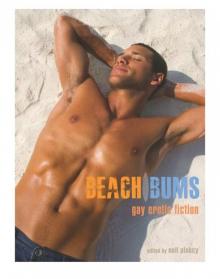 Beach Bums
Beach Bums Sexy Sailors
Sexy Sailors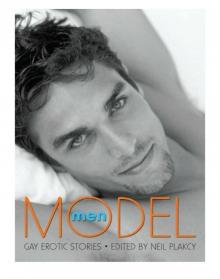 Model Men
Model Men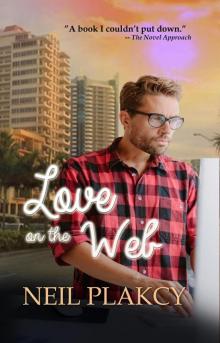 Love on the Web
Love on the Web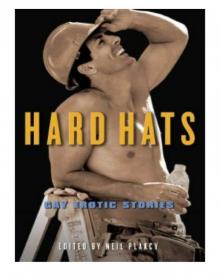 Hard Hats
Hard Hats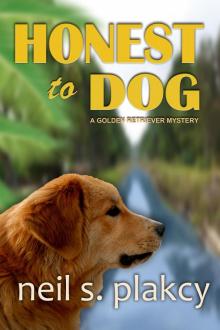 Honest to Dog
Honest to Dog Skater Boys
Skater Boys Beach Bums_Gay Erotic Fiction
Beach Bums_Gay Erotic Fiction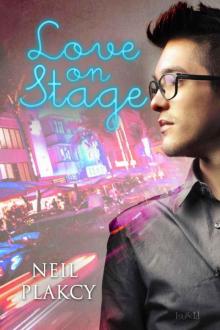 Love on Stage
Love on Stage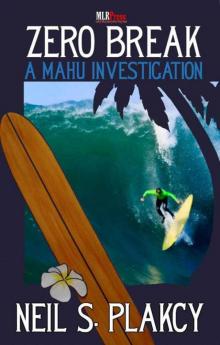 Zero Break
Zero Break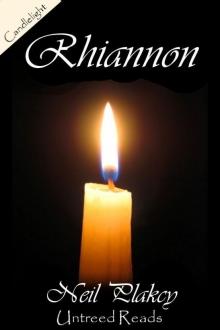 Rhiannon
Rhiannon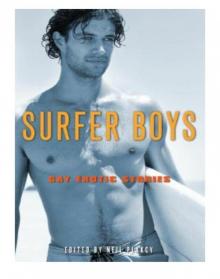 Surfer Boys
Surfer Boys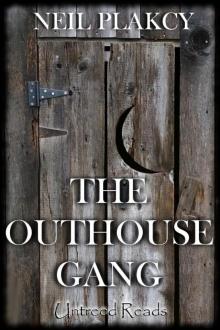 The Outhouse Gang
The Outhouse Gang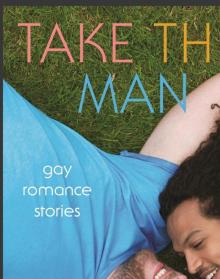 Take This Man
Take This Man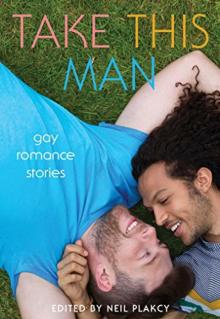 Take This Man_Gay Romance Stories
Take This Man_Gay Romance Stories Genie for Hire
Genie for Hire